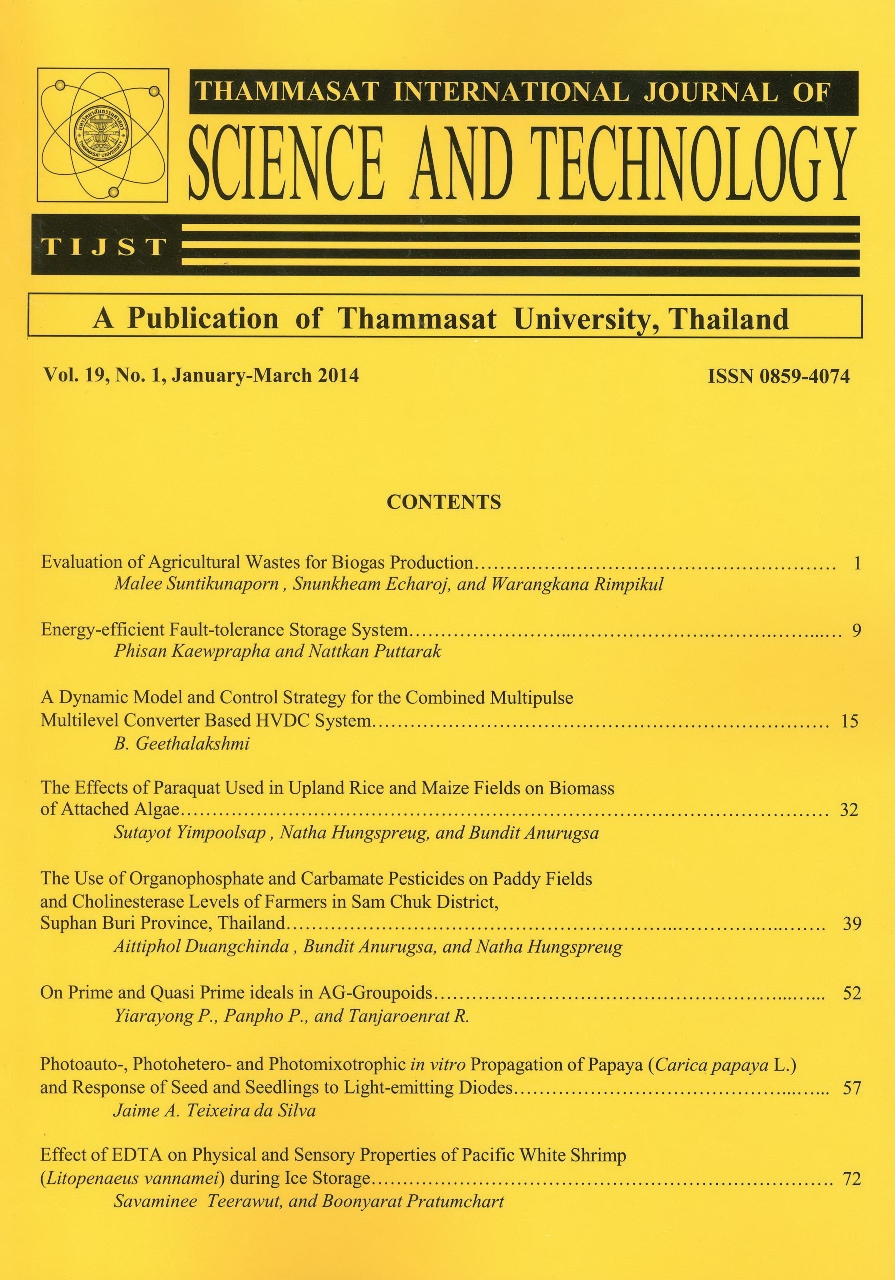Biodiversity of endophytic bacteria isolated from duckweed (Landoltia punctata) and their IAA production
Main Article Content
บทคัดย่อ
Endophytic bacteria are recognized for their plant growth promoting benefits. One of the mechanisms is the production of the phytohormone indole-3-acetic acid (IAA). In this study, duckweed isolates A1 and A2 were collected and characterized as Landoltia punctata based on their morphological characteristics and the phylogenetic analysis of the atpF-atpH intergenic region sequences. Seventy-one endophytic bacteria were obtained from both duckweed isolates. Molecular analyses of the 16S rRNA gene sequences revealed that the endophytic bacterial communities consisted of members in phyla Actinobacteria (10 isolates), Deinococcus-Thermus (1 isolate), Firmicutes (55 isolates) and Proteobacteria (5 isolates). Screening for IAA production yielded 27 positive strains. Quantification of the IAA content indicated variable efficiencies in IAA production by these endophytic bacteria. The highest IAA level was observed in Deinococcus sp. L2-88 (713.2+11.6 µg/mL). The results obtained from our study displayed the biodiversity of endophytic bacteria from L. punctata and suggest their potential role in plant growth promotion through IAA production.
Keywords: Duckweed; Landoltia punctate; 16S rRNA; Indole-3-acetic acid; endophytic bacteria.


